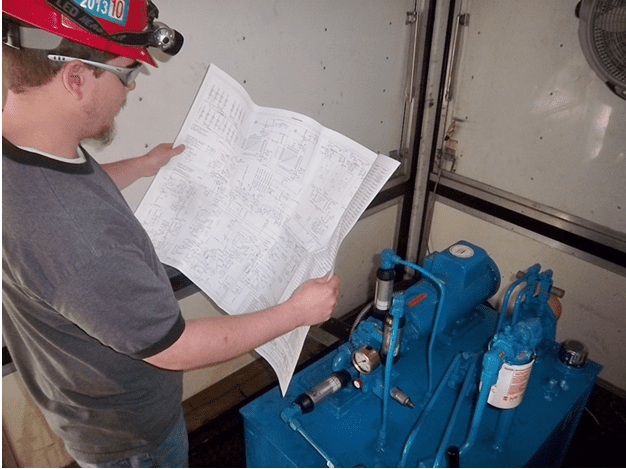What Every Hydraulic Troubleshooter Needs to Know
 Hydraulic Troubleshooter
Hydraulic Troubleshooter
Actual troubleshooters can be rare, but that does not mean you cannot train to be one. If you work around a particular system for a long time and see it fail often, it is easy to know when it has a problem and what to replace to fix the issue. To be effective as a troubleshooter. Once you know the hydraulic part with a problem and change it, the problem should go away. The problem is when you change it, and it does not correct the issue. It will lead to finding a way or a part to change to get the system back in service, or you get someone who understands the industrial equipment to assist. Thus, to reduce downtime, train your parts changers on how to troubleshoot. Below are the things they need to know to be a hydraulic troubleshooter. 
Read and use a schematic as a tool to troubleshoot 

Most industrial equipment can be too complex and large to troubleshoot. Thus, you need to know how to read and use a schematic to troubleshoot effectively. Often, portions of the machine can be in different rooms or different buildings. In this case, the schematic will be a guide, and you can easily trace the flow and identify the cause of a problem. When you cannot use a schematic or know how to read it, not only will you not trace the flow, but it will be laborious and sometimes impossible. For simple equipment, such as a log splitter, you do not need a schematic. But, in a system with a manifold, it is impossible to troubleshoot with no schematic. You need to know how the components are connecting in the manifold. Or you will end up making an educated guess. Using a schematic is a vital troubleshooting tool. If not, you are just parts changing. 
The function of all the components
 What Every Hydraulic Troubleshooter Needs to Know 7
What Every Hydraulic Troubleshooter Needs to Know 7As a troubleshooter, you need to know every component of the system and what it does. It may sound easy, but most hydraulic components look similar but perform various functions. For instance, a relief valve can easily be mistaken for cartridge-type flow control, while an accumulator can have different purposes, such as shock absorption and flow assistance. When you don’t know what a component does, it is unlikely to tell if it is causing the issue or not. Therefore, learn the various hydraulic components and their uses to troubleshoot correctly. 
The correct reliability checks to make 
An accurate troubleshooter needs to know the reliability checks regularly check the wear and tear of components before an outage occurs. Hydraulic components are not like lightbulbs that work well one day, and then another day, they are not. Most of them wear gradually, and the symptoms show before the components fail. If you know what to look for as a troubleshooter, it is easy to spot the signs. For instance, the first indication of impending failure is temperature gain across a component. Therefore, you need to know what the right temperature is to spot an abnormally high temperature. Have reliability checks monthly for most if not all components. By following a good reliability schedule, little can fail without knowing that it is getting worn out. 
How to adjust the system properly 

Most failures are a result of poor adjustments or not keeping the system adjusted. Unfortunately, this can cost you a lot of money when you call professionals who travel for hours and tell you the problem is the poor adjustment. When you have a poorly adjusted hydraulic component, it is similar to having a faulty one. Therefore, as a troubleshooter, you need to know the correct adjustments and the correct procedure to follow.
Safety
For anyone working around a hydraulic system, safety should always be in mind. Be attentive to all lock-out procedures, and in case you do not understand some of them, ask around. This will help prevent injury due to not understanding the basics of hydraulic safety. For this reason, be aware of the energy state of the system, for even low pressure can cause injury. If you find the procedure unsafe, consult with your supervisor. It is vital to perform every job safely. 


0 Response to "What Every Hydraulic Troubleshooter Needs to Know"
Post a Comment